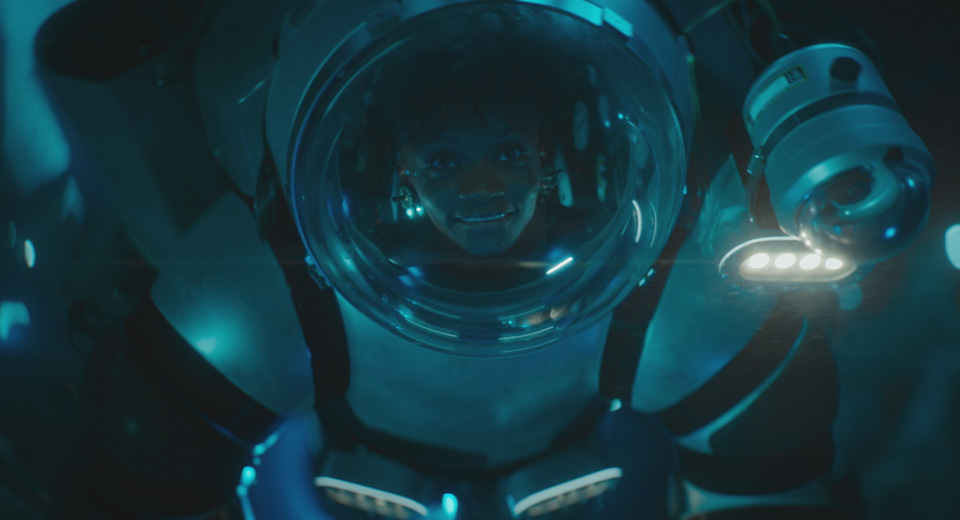Our Work on Black Panther: Wakanda Forever
Wētā FX’s brief for Black Panther: Wakanda Forever was primarily focused on under-water scenes, with highlights including the ancient underwater city and vibrant culture of Talokan.
We took architectural cues from what Namor – the feathered serpent god K'uk'ulkan - and his exiled followers knew – Mayan and Zapotec design - and the team drew inspiration from ancient and modern-day interpretations of Mayan architecture.
As we follow Shuri on her visit, this is evident through neutral buoyancy ball games, underwater horticulture of adapted crops using geothermal vents, a vertical marketplace as well as dwellings arranged in three dimensions. These are all part of subaqueous life in the city.
Swimming and the occasional ride in the hydro tube network are the main means of transportation for the Talokan people.
Talokan is a CG environment of enormous proportions at 4 kilometres wide by 2 kilometres high. The city is nestled in a rocky canyon assembled from a library of building blocks created by the artists using imagery from ocean rockfalls and bathymetric data of an Atlantic trench and befitting the cultural heritage of a Central American civilisation.
Light in Talokan comes primarily from the sun made from Sastun - a mineral with light-enhancing properties that sits above Namor’s central throne room, and the rest of the city is also lit by pockets of bioluminescence.
Bold coloured buildings still give us an interesting palette after being muted by the water’s uneven colour absorption and flurries.
We spent a lot of time researching the effect water and marine snow has on colour reproduction, both on buildings and human skin tones as we brought the underwater kingdom to life with buildings, crowds, props and vegetation.
Wētā also worked on the mining mission in the opening scenes, and the sub-surface shots in the third act battle between the Wakandans and Talokan people in, on, and under the Royal Sea Leopard vessel.
